The National Institute on Drug Abuse reports that up to two-thirds of people in treatment for drug abuse say that they were abused during childhood – whether physically, emotionally, or sexually. Studies show that there’s a relationship between childhood abuse and drug abuse later in life, but gaps in information remain, requiring further study.
A 2011 article in The Fix reports on a study of children who attended one of the 10 middle schools and high schools closest to ground zero on the 9-11 attacks. Results indicate that the more trauma-inducing factors a child experienced (knowing someone who died, being in a situation that caused them to fear for their own life or the life of someone they love during the attacks, and the proximity of the school they attended to the Twin Towers on that fateful day), the more likely they were to use alcohol or drugs.
%
Abused During Childhood
“Compared to those with no exposure factors, teens with one were five times more likely to increase alcohol and other drug use and those with three or more factors were a stunning 19 times more likely to increase their alcohol or drug use,” the article reports. “The youth who increased their use had more difficulty with their schoolwork, lower grades and more behavior problems, suggesting that they weren’t just using drugs but had developed drug abuse or even potential dependence.”
These results don’t stand alone; an increasing body of research continues to link traumatic experiences in childhood to an increased likelihood of abusing drugs and/or alcohol at some point in an individual’s life – some may begin experimenting with drugs or alcohol during adolescence, while others will develop addictions later in life.
We’ve put together this comprehensive report to examine the existing evidence supporting the link between childhood abuse and addiction as well as to provide a framework for moving toward more positive outcomes for children who are subject to abuse. With the right programming, support, and other initiatives, communities can stop the cycle of abuse and addiction for today’s generation of young people.
What You’ll Find in This Guide:
Examining Current Research: Linking Abuse and Addiction
Dr. Martin H. Teicher and a team of colleagues at McLean Hospital, a psychiatric hospital affiliated with Harvard University, compared the brain scans of 51 patients with those of 97 healthy children, noting a “reduction in the size of sensitive areas of the brain and to abnormal brain waves that mimic epilepsy” among children who have suffered from abuse.
One affected brain structure is the corpus collosum, which connects the left and right hemispheres of the brain. A reduction in size of this important structure can result in “dramatic shifts in mood and personality,” Teicher notes. Abnormalities in other structures can impact an individual’s ability to regulate emotions and impulses, more intense cravings for drugs, and a decreased ability to analyze the potential consequences of actions such as illicit drug use.
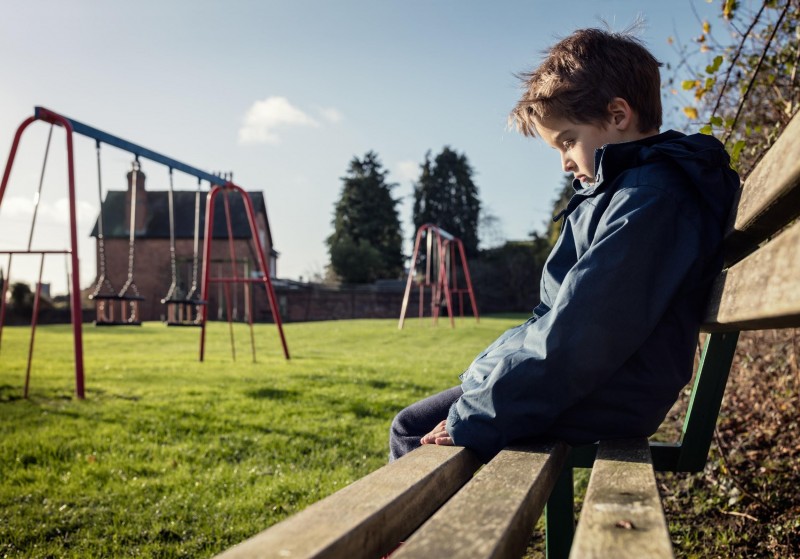

- Physically Abusive Behavior 40%
- Met Clinical Diagnostic Criteria 56%
Challenges In Preventing And Treating Addiction When Childhood Abuse Is A Factor
Adolescents Currently Use Illicit Drugs

Increasingly, adolescents entering treatment for substance abuse have a “history of victimization or significant trauma, such as domestic violence, physical or sexual abuse, parental incarceration or substance abuse, rape or homicide,” according to a report from NPR. The most alarming aspect of this trend, however, is that kids who start using alcohol or drugs at earlier ages are often doing so in order to self-medicate, or to escape from the trauma that surrounds their lives. Once substance abuse begins, kids who use drugs as an escape mechanism tend to quickly escalate to more dangerous substances.
But Rob Vincent, a SAMHSA public health analyst, explains to NPR that of the adolescents between 12 and 17 years old who have been identified as needing treatment, just one in 20 of those youth are actually receiving treatment. As such, efforts are primarily focused on improving prevention measures, such as the SBIRT — the Screening, Brief Intervention and Referral to Treatment model.
- Physical, emotional, or sexual abuse
- Physical or emotional neglect
- Violent treatment of a child’s mother
- Substance misuse within the household
- Mental illness within the household
- Parental divorce or separation
- Incarcerated family member

Assessing Prevention Needs
Collaborating With Strong Community Partners
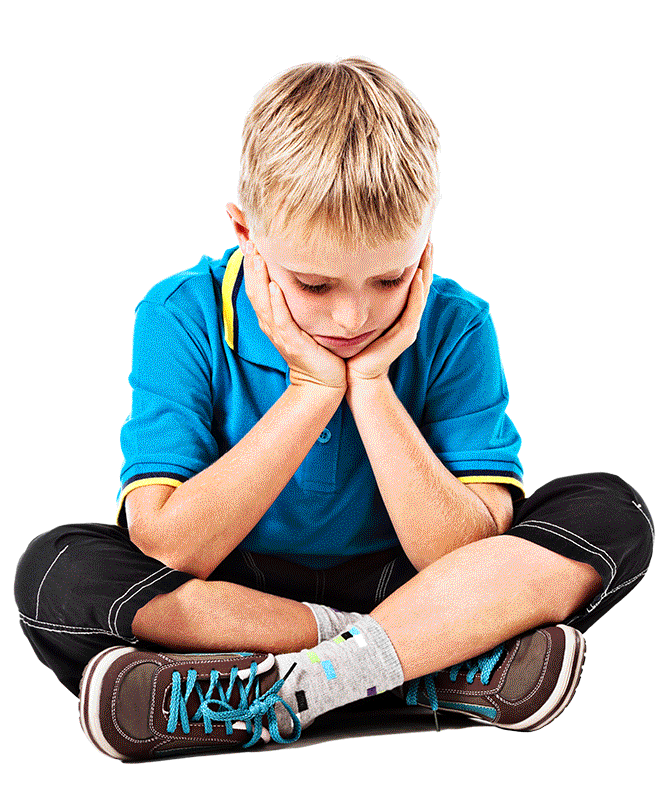
The Addiction Technology Transfer Center Network (ATTC) reports on findings from Alcoholism: Clinical & Experimental Research, noting that childhood trauma experiences (CTEs) may be an environmental factor for developing psychiatric disorders, including alcohol dependence and substance abuse. However, there are challenges in studying links between certain types of experiences – such as emotional abuse – as these experiences are often more difficult to define. Studies show that experiencing more than one type of CTE has a cumulative effect, increasing the likelihood of addiction and even suicide.
The study’s authors recommend that clinicians take a more comprehensive approach in assessing prior life experiences in patients with alcohol dependency. “These highly co-morbid patients reporting cumulative exposure to traumatic stress in childhood are often seen in routine practice,” explains Willemien Langeland, a freelance trauma researcher at Vrije University in Amsterdam and the University of Amsterdam. “These findings point to the importance of a more systematic trauma assessment in alcohol-treatment services. And I also urge clinicians to address alcohol use at every clinical encounter with children and adolescents that have been identified as victims of childhood trauma, as early interventions in abused children might improve their psychological as well as medical health.”
Above the Influence is a helpful resource for adolescents, aimed at helping teens to recognize the effects of peer pressure and shape healthy decisions through real stories from teens who have overcome these influences without giving in to outside pressure. Likewise, TheCoolSpot.gov offers similar resources to help teens combat peer pressure and make smart choices.
While these (and the many other) programs are valuable for educating adolescents through school, parents, and other means on the importance of abstaining from alcohol and drug use, they don’t address the root problems impacting children who are suffering, or young or older adults who have suffered from abuse.
For adolescents who have suffered from abuse, addressing the root cause – the emotional, psychological, and physical impacts of the abuse that have caused abnormalities in brain structure and function – is the key to successful intervention that reduces the likelihood that these victims will turn to substance abuse as a way to self-medicate at some point throughout their lives.

Immediate Interventions For Children Who Have Been Abused
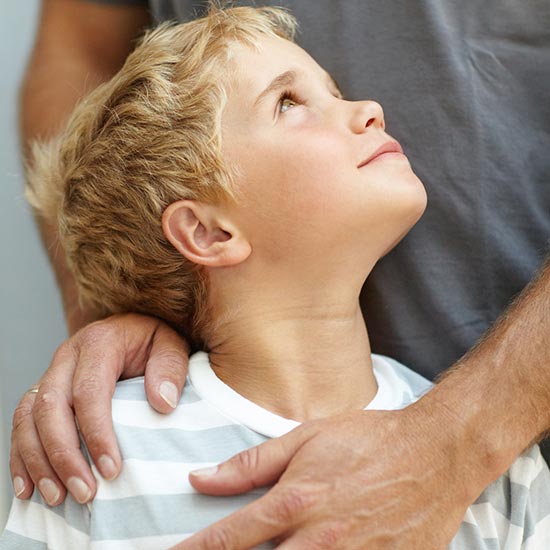
The National Child Traumatic Stress Network offers insights on age-related reactions to traumatic events, including tips for parents and professionals to adequately support children who have endured traumatic experiences.
The National Technical Assistance Center for Children’s Mental Health outlines a System of Care Framework for building “comprehensive, effective community service delivery systems for our most vulnerable children and their families.”
Georgetown University’s Center for Child and Human Development offers a set of resources and guidelines for supporting mental health and development for specific developmental age groups including infancy, early childhood, middle childhood, and adolescence. The Center’s website states, “The four developmental tools offer a framework for families and providers to begin a conversation together about how best to support healthy social and emotional development in children and teens.”
Additionally, the Center offers guidance for meeting the healthcare needs of children who are in the foster care system, which is often the case for children who have been abused once abuse is discovered, and information on designing a recovery-oriented care model for adolescents and transition-age youth with substance abuse and co-occurring mental disorders.
“Pediatricians are in a unique position to identify early childhood mental health concerns and family mental health and substance abuse risk factors,” explains the Center for Child and Human Development. “This SAMHSA, funded, web-based resource features eight innovative medical home practices that integrate behavioral health screening for the whole family, facilitate referrals to community services, and offer follow-up care.”
Blueprints for Healthy Youth Development offers guidance on assessment to appropriately match children and adolescents with adequate programming based on considerations such as:

Outcome Areas
Risk And Protective Factors
Developmental Stage
Risk and Protective Factors Associated with Binge or Heavy Episodic Drinking Among Adolescents and Young Adults: Using Prevention Research to Guide Prevention Practice is a publication of SAMHSA which “provides recommendations for using prevention research to inform the selection and prioritization of factors.”
The National Institute on Drug Abuse provides a research-based guide on Principles of Substance Abuse Prevention for Early Childhood, offering proven strategies for early intervention, risk and protective factors, and the importance of early childhood in substance abuse prevention.
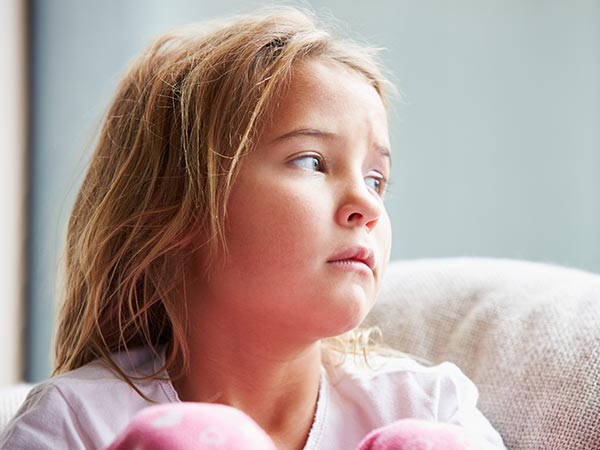
“Intervening during windows of opportunity—the period of time between when the symptoms are first detected and when the disorder is diagnosed—can prevent the disorder from developing,” explains SAMHSA. “However, the intervention must be appropriate for the target population’s development phase.” This Windows of Opportunity chart offers insights into the link between a child’s age at first symptom and age at first diagnosis.
Rapid detection of potential abusive situations and immediate interventions that aim to remove the risks for children and subsequently provide adequate treatment to address the underlying impacts of abuse is the clear path to successfully reducing the number of abused children who will go on to become addicts later in life.
Long-Term Support For Abused Children
In this section we provide resources and information on further interventions and long-term treatment options for adults with substance abuse disorders who have experienced traumatic or adverse childhood events such as physical, emotional, or sexual abuse.
While prevention is often the key focus in addressing substance abuse issues in children who have suffered abuse, prevention is just one component of the larger Continuum of Care, which includes Promotion, Prevention, Treatment, and Recovery.
SAMHSA’s efforts in addressing the link between childhood abuse and substance abuse have increased in recent years. This 2012 video examines Adverse Childhood Experiences: Implications for Transforming Our Systems of Care, and this video, also from 2012, addresses risk factors for substance abuse and mental health with a focus on adverse childhood experiences.
The Australian Government’s Australian Institute of Family Studies reports on the effects of childhood abuse and neglect on adult survivors in this January 2014 report.
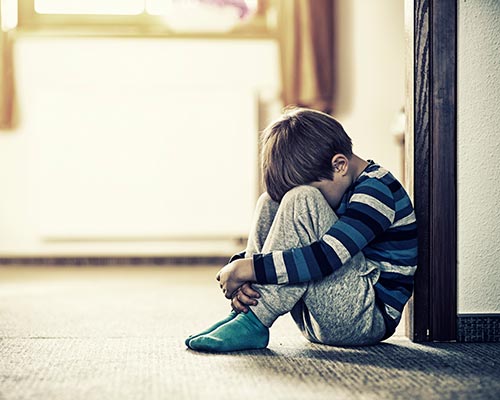
- Waited More Than A Year To Seek Treatment 43%
- Waited More Than Two Years 22%
The Anxiety and Depression Association of America (ADAA) offers resources for treatment for children with anxiety disorders, which are sometimes a consequence of childhood abuse. Anxiety and depression are treatable disorders, but the Child Mind Institute Children’s Mental Health Report Card found that of the 22% of parents who reported being concerned about their child’s mental health, 87% sought treatment, but 43% waited more than a year to seek treatment and 22% waited more than two years.
Dr. Joan Kaufman explains the four stages of cognitive behavior therapy for treating children with PTSD. Cognitive behavior therapy is considered “the best evidence-based intervention for children who have impairing reactions to traumatic events.” Dr. Kaufman states that it’s imperative that caregivers and children must work together, and clear, open lines of communication coupled with understanding are impactful in the treatment process.
Traumatic experiences in childhood alter genes, but those changes are not necessarily permanent. The Child Mind Institute explains, “the right combination of nurturing and treatment has been shown to reverse those epigenetic changes that affect stress reactions and make kids more prone to psychiatric and other illnesses.” Studies have shown that even short-term, targeted therapy following traumatic experiences for children can diminish the symptoms of post-traumatic stress.
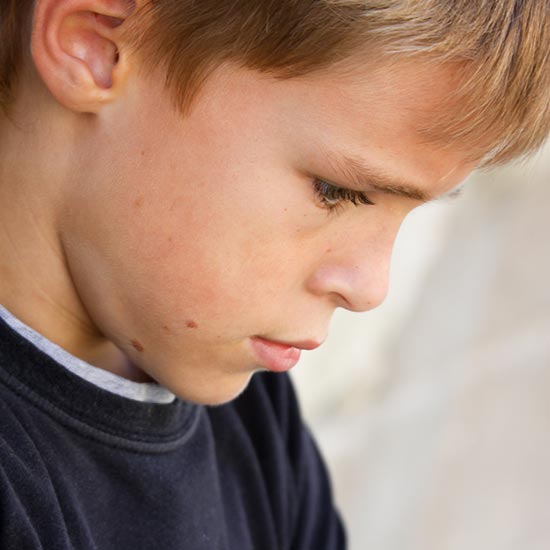
The National Institute of Mental Health provides more insights on the changes that occur in the brains of teens and young adults that result in changes in behavior, as well as the effect of alcohol on the young brain.
The Centers for Disease Control and Prevention reports on the effects of childhood stress on health across the lifespan in this report.
There are a variety of treatment approaches for children and adolescents who suffer from anxiety or depressive disorders manifesting from traumatic experiences in childhood. The ADAA outlines several common approaches to treatment for long-term recovery.
The American Counseling Association analyzes the counseling implications of the long-term effects of childhood sexual abuse, and this research report delves into the long-term health outcomes of childhood abuse.
Suffering from any form of abuse during childhood is devastating and has lifelong consequences. The best outcomes are achieved through early intervention and immediate treatment coupled with preventative measures to reduce the likelihood that children who suffered from abuse do not turn to drugs or alcohol as a way to self-medicate. However, when children do not receive the immediate interventions required for successful prevention, a holistic approach to treatment that addresses the underlying factors of abuse during childhood is the key to long-term recovery.

